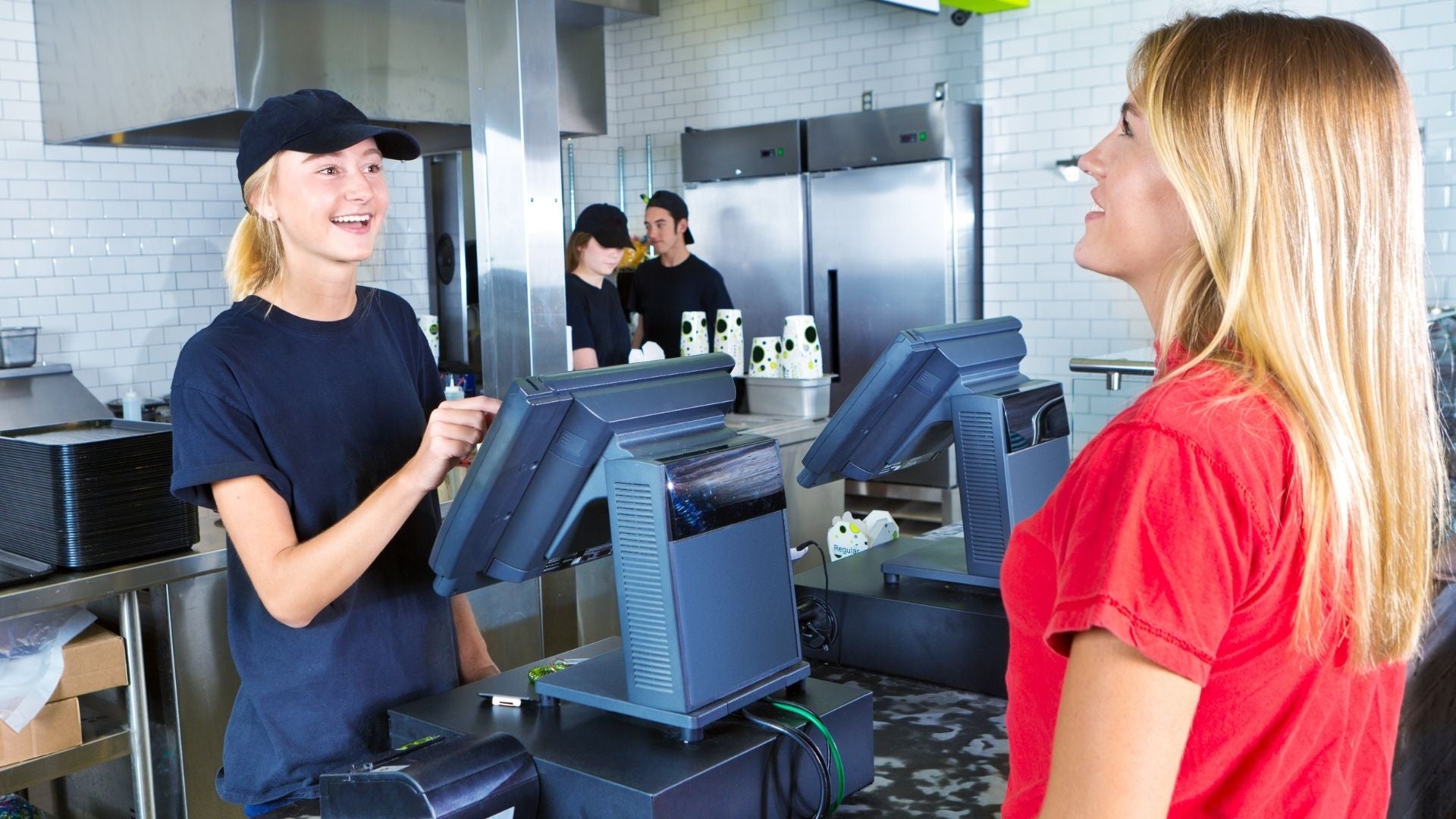
The Top Security Camera Solutions for the Fast Food Industry
In today's fast-paced world, the fast food industry thrives on efficiency and customer satisfaction. However, with the hustle and bustle of busy restaurants comes the need for heightened security measures to ensure the safety of both staff and patrons.
Enter advanced security camera solutions, which have revolutionized the way fast food establishments maintain safety and uphold food standards.
As industry leaders in advanced security solutions, the BV Security team understands the unique challenges you face in the fast food industry. Our years of hands-on experience and dedicated research have equipped us to provide you with the most effective and up-to-date security solutions tailored for your business needs.
In this article, you'll gain insights into the latest technological advancements, strategic camera placements for comprehensive coverage, and best practices for optimizing your security systems across multiple locations. By the end of the article, you’ll have actionable insights and recommendations to ensure the safety of your staff, customers, and assets
Enhancing Fast Food Security with Advanced Camera Solutions

The Rise of Color 24/7 Technology
One of the most significant advancements in security camera technology for fast food establishments is the introduction of color 24/7 technology. This feature is especially crucial for areas like parking lots, where various incidents can occur. With color 24/7 technology, establishments can capture clear footage regardless of the time of day, providing identifying details such as the color of a car, which can be pivotal in incident documentation.
Comprehensive Coverage: Inside and Out
Fast food establishments are not just focusing on external security; there's an increasing emphasis on monitoring internal areas as well. From the drive-through menu boards to the cashier counters, security cameras are strategically placed to ensure comprehensive coverage. This extensive monitoring ensures that all critical areas, including the food production zone and payment areas, are under surveillance.
Such thorough coverage is essential for several reasons:
- Food Safety: Monitoring food preparation areas ensures that food safety standards are upheld, and any deviations can be quickly addressed.
- Liability: In the event of accidents, like a customer slipping or any other incidents, having clear footage can limit the establishment's liability by providing an accurate account of the event.
- Robbery Deterrence: Visible cameras can act as a deterrent for potential wrongdoers, reducing the chances of theft or other malicious activities.
- Payment Security: With the rise of digital payments, ensuring the security of credit card readers and payment processing areas is crucial. Cameras facing these areas can help in monitoring any suspicious activities, safeguarding both the business and its customers.
Strategic Camera Placement for Enhanced Security
The placement of cameras plays a pivotal role in enhancing security. While it's essential to have cameras in money-handling areas like cash registers, strategic placement in other areas can provide additional layers of security. For example:
- Entrances and Exits: Monitoring these areas can help track everyone entering or leaving the establishment, providing valuable data in case of any incidents.
- Drive-Through Areas: Cameras placed at both the ordering and food collection points can ensure smooth operations and monitor any discrepancies.
- Internal Monitoring: Cameras placed inside, especially in food preparation areas, can ensure adherence to food safety standards and monitor staff efficiency.
Scalability in Security: Meeting the Needs of Growing Fast Food Chains

The fast food industry is dynamic, with many chains looking to expand and grow their presence in various locations. As these chains grow, so does the need for a robust and scalable security system.
Here's how the scalability of security cameras and their associated technologies can impact and benefit a growing fast food chain.
The Power of Video Management Software (VMS)
When a fast food chain is limited to a single location, monitoring through individual devices like cell phones might suffice. However, as the number of outlets increases, the need for a more integrated and centralized system becomes evident. This is where a Video Management Software (VMS) comes into play.
A VMS is a comprehensive computer program designed to pull in recordings from multiple locations, even if they are spread across the globe. This centralized system allows business owners and security personnel to view footage from all outlets in one unified place.
The benefits of a VMS system include:
- Unified Monitoring: Instead of toggling between different feeds on a mobile device, a VMS provides a streamlined view of all locations. This is especially beneficial for chains with numerous locations, as it ensures that monitoring is efficient and cohesive.
- Customized Views: With a VMS, users can customize their monitoring experience. For instance, if a business owner wants to monitor all cash registers across outlets, they can do so with a single click. Similarly, checking the security status of all front doors after closing hours becomes a breeze with the VMS's ability to display all relevant feeds simultaneously.
- Enhanced Security Protocols: A VMS isn't just about viewing; it's about enhancing security protocols. With real-time alerting, businesses can be instantly notified of any security breaches or unusual activities across all locations. This immediate notification system ensures swift action, further bolstering the security of the establishments.
The Benefits of Real-Time Alerts

One of the standout features of modern security systems, especially when integrated with a VMS, is the capability to provide real-time alerts. These alerts play a pivotal role in easing security concerns for fast food chains:
- Immediate Notification: Whether it's an unauthorized entry after business hours or unusual activity at a cash register, real-time alerts ensure that the concerned personnel are notified immediately, allowing for quick response and action.
- Enhanced Safety Protocols: With real-time alerts, businesses can ensure that safety protocols are adhered to. For instance, ensuring that all outlets are securely locked after closing hours becomes more manageable with instant notifications.
Cloud-based vs. On-Premise Solutions

Cloud-Based Solutions
Pros:
- Accessibility: One of the primary benefits of cloud storage is the ability to access footage from anywhere, provided there's an internet connection. This offers flexibility, especially for business owners who manage multiple locations.
- Scalability: As the business grows, cloud storage can be easily scaled up to accommodate more data without the need for physical hardware upgrades.
Cons:
- Network Restrictions: Many prominent fast food chains have stringent controls over their network traffic. This often means that cloud storage solutions, which require data to be transferred over the network, might not be feasible.
- Ongoing Costs: While cloud storage might seem cost-effective initially, it often involves recurring monthly or yearly fees, which can add up over time.
- Security Concerns: Storing sensitive footage on the cloud can raise security concerns, especially if the cloud provider doesn't have robust security measures in place.
On-Premise Solutions
Pros:
- One-time Cost: On-premise solutions come with built-in space for hard drives. This means businesses incur a one-time upfront cost, which can be more economical in the long run.
- Control and Security: With on-premise solutions, businesses have complete control over their data. There's no reliance on third-party providers, ensuring that the footage remains secure and within the company's premises.
- Backup Options: BV Security's on-premise solutions come with the added advantage of onboard storage on cameras. This acts as a backup, ensuring that even if the primary storage is compromised, there's a secondary source of footage available.
- Expandability: As storage needs grow, on-premise solutions can be easily expanded by adding or swapping out hard drives.
Cons:
- Physical Vulnerability: While on-premise solutions offer enhanced security in terms of data control, they are physically present at the location. This means they could be vulnerable to theft or damage.
Best Practices for Managing Security Camera Systems Across Multiple Fast Food Locations

Managing security camera systems across multiple fast food locations can be a daunting task. However, with the right practices in place, businesses can ensure optimal security and efficient operations. Here are some best practices to consider:
1. Stay Involved in Monitoring Your Setup
While it might be tempting to set up your security system and forget about it, active involvement is crucial. Regularly checking in on your cameras ensures that they are functioning correctly and capturing the necessary footage. This proactive approach can help identify and address issues before they escalate.
2. Change Default Passwords
One of the most common oversights in security management is retaining the default username and password provided out of the box. These default credentials are often easy to guess, making your system vulnerable to unauthorized access. Always change the default credentials to something unique and strong. This simple step can significantly enhance the security of your system.
3. Regular Maintenance Checks
Consistency is key when it comes to maintaining security systems. Establish a routine, such as a weekly cadence, to:
- Inspect Camera Angles: Ensure that cameras are positioned correctly and haven't been inadvertently moved or tampered with.
- Check for Obstructions: Over time, lenses can accumulate dirt, grease, or other obstructions that can compromise the clarity of the footage. Regularly clean camera lenses to ensure clear footage.
- Review Footage: Periodically review footage to ensure the system is capturing the necessary data. This can also help identify any potential issues with storage or camera functionality.
- Test Playback: Occasionally test the playback feature to ensure that recorded footage can be easily accessed and viewed without any errors or glitches.
4. Stay Proactive, Not Reactive
The goal of implementing these best practices is to stay ahead of potential problems. By being proactive, businesses can ensure that their security systems are always in optimal condition, ready to capture crucial footage when needed.
Recommended Camera Models for Fast Food Chains
For those in the fast food industry, BV Security recommends the following models:
BV-Tech 8MP Outdoor Security IP Turret PoE Camera (CA-IPDF-3082M-28A)

This camera includes features such as:
- 8 MP High Resolution with a 1/2.5" 8 MP Progressive Scan CMOS Sensor
- 2.8mm Fixed Wide Angle Lens
- IP66 Outdoor Weatherproof Rating
- Built-in microphone with Micro SD slot (up to 128GB)
- Compatible with PoE Switch and Injector in 802.3af (36 V to 57 V)
BV-Tech 4MP Outdoor Security IP Turret PoE Camera (CA-IPDF-3042M-28A)

This camera includes features such as:
- 4 MP High Resolution with a 1/3" 4 MP Progressive Scan CMOS Sensor
- 2.8mm Fixed Wide Angle Lens
- IP67 Outdoor Weatherproof Rating
- Built-in microphone with Micro SD slot (up to 128GB)
- Compatible with PoE Switch and Injector in 802.3af (36 V to 57 V)
Both models are versatile, offering high-quality footage in various environments, from hot kitchens to walk-in freezers.
Summary
If you have any questions unique to your situation or need help finding the right solution, please feel free to contact one of our experts at (847) 619-2288. Additionally, you can reach us via email: support@bvsecurity.com or visit our website https://bvsecurity.com/ to view available products and latest guides.
